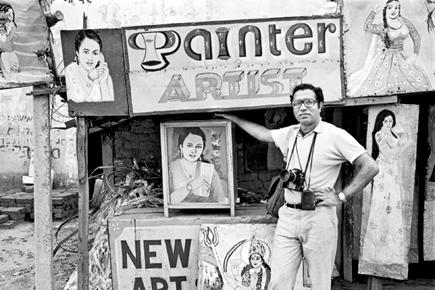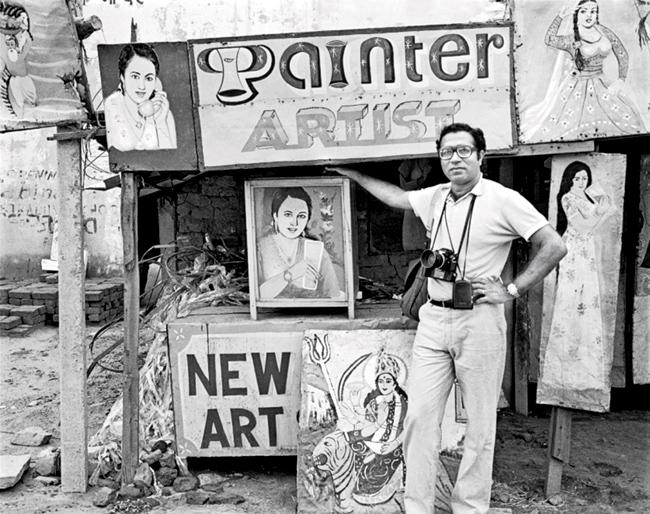Using a personal prism via a special talk, photographer and activist Ram Rahman will explore the works, motivations and influences of Indian photographer Raghubir Singh, whose colour photographs helped re-invent the medium, especially in India

Raghubir Singh
The world knows of Raghubir Singh (1942-1999) as the Indian photographer who captured India and its people and showcased these frames for the world to see in some of the most reputable galleries and publications.
ADVERTISEMENT

Raghubir Singh in Delhi, 1982. Pic courtesy/Ram Rahman
There is very little information on how a self-taught photojournalist became popular. Was it India and its beauty, or was there something else that changed his approach to photography? Who were the people who influenced and shaped his artistic vision?
These are some of the questions that Indian photographer Ram Rahman will attempt to answer in his lecture, Rediscovering Raghubir Singh, at Dr Bhau Daji Lad Museum this Saturday.
“Little is written or known about Singh, and what inspired his photography,” believes Rahman, who came in contact with Singh for the first time in New York in 1981. “Singh was in New York for the funeral of Bansi Chandragupta who was Satyajit Ray’s artistic director,” he recalls.
Inspire the frame
Rahman, who was also dabbling with photography at that time, was inspired by Singh. He played host to Singh on several occasions in New York, and later in Delhi. Over the years, they became good friends, and would often spend hours discussing photography, art and design. Now, based on these discussions with Singh, Rahman has created a 90-minute-long lecture, where he will speak about 70 of Singh’s works, along with images of Singh’s colleagues, and some works of photographers who influenced Singh.
“This lecture is a very personal talk about Singh, his background, his influences and how and in which direction his work evolved. It isn’t just about sharing the images, but also about placing these in context with the time when they were created,” elaborates Rahman. The photographer informs that Singh took colour photography very seriously at a time when the world was blindly in love with B&W. But what makes Singh’s works really significant in the context of Indian art and culture was his vision.
Self-taught genius
Singh began as a self-taught photojournalist, and like most of the photographers of that era learned the craft on the job. But he was different from the rest. “Singh became friends with art historians and trained in art history, which almost no photographer did. He was also highly influenced by American photographers, who shaped his vision. All this helped Singh develop a keen interest in Indian art history as he went on to document Indian art, architecture, over several years,” shares Rahman.
When asked about the challenges faced while collecting the materials for the lecture, Rahman says, “I knew Singh very well, hence, I had a unique perspective of his work. So, my biggest challenge will be to convey that effectively and truthfully. Another challenge was to source his works, which wouldn’t have been possible without the help of his daughter and wife, based in Paris.”
 Subscribe today by clicking the link and stay updated with the latest news!" Click here!
Subscribe today by clicking the link and stay updated with the latest news!" Click here!






